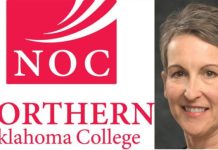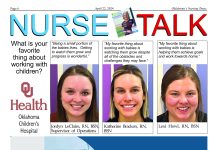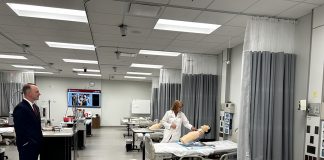Nurses across the country – including the thousands of NNU-affiliated nurses in New York City and Minnesota’s Twin Cities who went on historic strikes in recent months – insist that there is no “shortage” of professionals in their field. Simply put, there is a failure by hospital industry executives to put nurses and the patients they care for above corporate profits.
Nurses will be the first to say that there is a staffing crisis in health care settings, particularly in hospitals’ critical care units. Many have seen some of their most experienced colleagues leave their hospital or the bedside altogether. Many themselves are currently contemplating a more sustainable profession after repeatedly working under conditions that are unsafe for themselves and their patients.
However, that does not mean there is a shortage of nurses. In fact, data shows:
* In 2022, there were more than one million registered nurses with active licenses who were not employed as RNs. 1 According to the most recent Bureau of Labor Statistics (BLS) data on RN employment – updated April 2023 – there are 3,072,700 employed registered nurses in the U.S. In comparison, there are 4,604,199 actively licensed RNs, according to May 2023 data from the National Council of State Boards of Nursing (NCSBN). 1 NNU believes this is a conservative estimate as the most recent BLS data averaged the number of employed RNs from November 2019 to May 2022, while the NCSBN data shows sustained increases, since at least 2018 and in every year subsequently, in the number of RN licenses issued nationally. Just from 2021 to 2022, the number of RN licenses jumped by approximately 262,000 – and as recently as March 2023, increased even further by 195,000 to 5,523,906. * The number of candidates who passed the nursing licensure exam for the first time has steadily grown. 2 In 2017, 166,247 candidates passed the NCLEX-RN exam for the first time. In 2021, the last year of available data from NCSBN, that number increased to 192,007. In the years between, there were steady increases in the numbers of licenses issued for the first time. 2 The number of licenses issued for the first time is a helpful indicator of the strength of the nursing pipeline, more so than the number of graduating nursing students. Graduated nursing students can only practice once they have passed their licensure exam. * The registered nurse workforce is growing – just not inside hospitals or other acute-care settings. Experts project that over the next decade, the national RN workforce will not only replace the expected 500,000 retiring RNs, but also expand the workforce by almost one million registered nurses. At the same time, data from 2019 to 2022 shows that the entirety of growth in RN employment during that period occurred outside of hospitals.
These data points show that the nursing education and licensing pipeline is strong. The reality is that RNs are moving into health care settings like outpatient clinics and doctors’ offices, confirming the need for better retention measures that improve their working conditions in acute-care hospitals.
THE RETENTION GAP – THE CRISIS THE HOSPITAL INDUSTRY CREATED
The data clearly shows that there is only a shortage of nurses willing to work in environments that risk their licenses and the safety of their patients.
It’s an inconvenient truth for the hospital industry but one that’s borne out by anecdotal and quantitative evidence. In fact, a recent survey of 200 hospitals found that the turnover rate is the highest it has ever been, at 27.1%. Yet, the media has been giving uncritical airtime to hospital industry claims of a “shortage” without connecting the dots between the unsafe and unsustainable work conditions executives have set and their failure to retain nurses.
Although the rampant mistreatment of nurses and health care professionals was on full display during the Covid-19 pandemic, nurses have long experienced dangerous working conditions, fueled by a chronic lack of employer support for their labor and their well-being. Polling after polling of nurses show that workplace conditions are driving them away from the profession: * Intentional low RN staffing levels imposed by hospital managers * Inadequate occupational health and safety protections * Insufficient stock of critical medical supplies and personal protective equipment (PPE) * Increasing levels of violence in the workplace To make matters worse, at many hospitals across the country – including at the nation’s largest hospital chain, HCA Healthcare (HCA) – new nursing graduates are caught in employer-mandated debt contracts. These are promoted as enhanced education and training programs, new graduate contracts, or so-called residency programs. In reality, they are an opportunity for hospital employers to exploit new nursing graduates to keep their labor costs low. These coercive agreements are tied to poor working conditions and unsafe patient care conditions. This is just one example of the greedy tactics and onerous conditions nurses are fighting against every day. How much longer are we willing to allow our nurses, whom we applauded as heroes, to bear this burden without accountability from their employers?
SAFE STAFFING – THE SOLUTION WE NEED TO TALK ABOUT
The hospital industry is keen to focus on the “shortage” of nurses as a consequence of a faulty “pipeline” that is failing to produce enough nurses. NNU believes nursing education and training can and should be improved, particularly to increase diversity and access to affordable programs. But the focus on the “pipeline” excuses hospital executives for their failure to retain their nursing staff by ensuring safe conditions.
As long as working conditions continue to decline at hospitals, no amount of investments in the nurse “pipeline” will be sufficient to stem the decline in staff retention. A critical first step is passing federal minimum standards for nurse-to-patient staffing ratios. Right now, California is the only state to have such minimum standards hospital wide.
Nurse employment grew significantly faster in California compared to other states after its nurse-to-patient minimum ratios were implemented (National Sample Survey of Registered Nurses). Nurses within the state not only returned to the bedside, but California’s ratios attracted nurses from across the country who appreciated being able to practice nursing under a safe working environment and get to spend time with their patients.
Fewer patient assignments mean lower rates of nurses’ job dissatisfaction and moral distress. It also means fewer California nurses miss changes in patient conditions because of their workload. It’s no surprise that academic research has found that California’s ratios law has improved the quality of health care outcomes for patients, including most notably a decrease in patient mortality. A 2021 study by Dr. Linda Aiken showed that if New York state had the same staffing mandate as California, at least 4,370 lives would have been saved that year alone.
THE RN WORKFORCE PIPELINE – STRATEGIES TO STRENGTHEN AND SUPPORT
While the primary focus should be on the retention of existing bedside nurses by improving working conditions and patient care in acute-care hospitals, the federal government also should strengthen the recruitment of RNs by:
* Creating a long-term, dedicated funding stream for tuition-free nursing programs at public community colleges; Giving funding priority to public community colleges located in health professional shortage areas (HPSAs) and medically underserved areas and populations (MUAs/MUPs); * Focusing on graduating and hiring RNs with two-year associate degrees (ADNs) over four-year bachelor’s degrees (BSNs) and advanced-practice registered nurses (APRNs); * The number of nurse practitioners (NPs), the largest occupation among APRNs, for example, increased by 109% between 2010 and 2017, while the number of RNs who were not APRNs grew by only 22% during this same time period. Addressing the institutional and industry bias towards BSNs versus ADNs also would help diversify the nursing workforce. * Supporting programs that build a culturally competent and diverse pipeline of nurses into bedside care, including increased funding for and improving the Nursing Workforce Diversity Program (NWDP); * Significantly increasing funding for and improving the Nurse Corps Scholarship Program (NCSP) and the Loan Repayment Program (NCLRP).
THE BOTTOM LINE: It’s convenient for hospital executives to blame the “nursing shortage” of nurses for their staffing woes. Durable solutions require a tough examination of the unsafe conditions they have set for nurses and how these unsustainable working conditions drive nurses away from the bedside. Focusing solely on the “pipeline” is incomplete and counterproductive without also discussing solutions to keep the nursing profession attractive, especially once nurses have passed their licensing exams and are working in hospitals and acute-care settings.
EDITORS NOTE: OKNT AND IT’S EMPLOYEES AND MANAGMENT DO NOT NECESSARILY SHARE THE OPINIONS EXPRESSED BY THE NNU.












